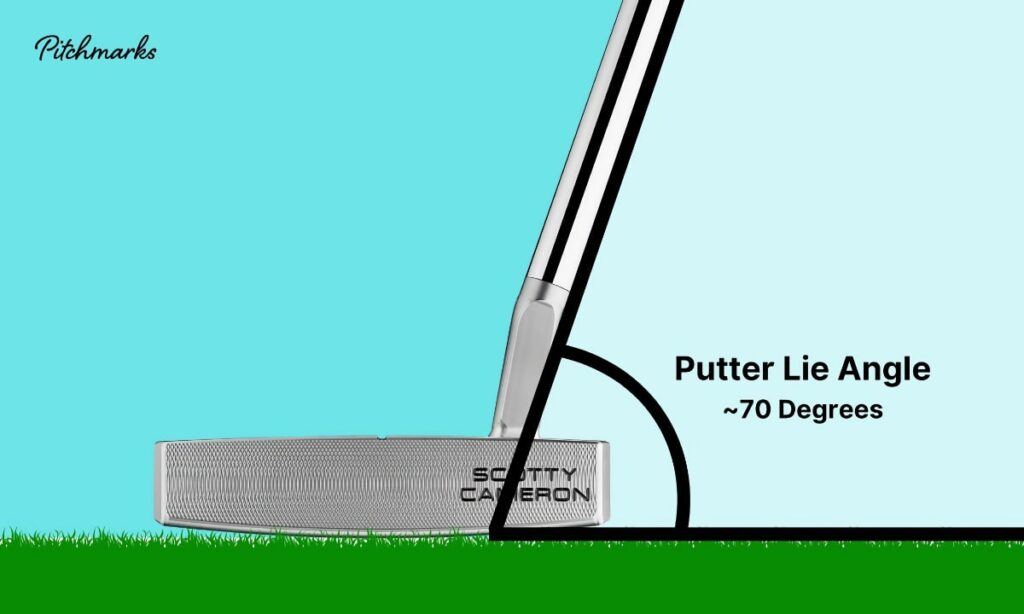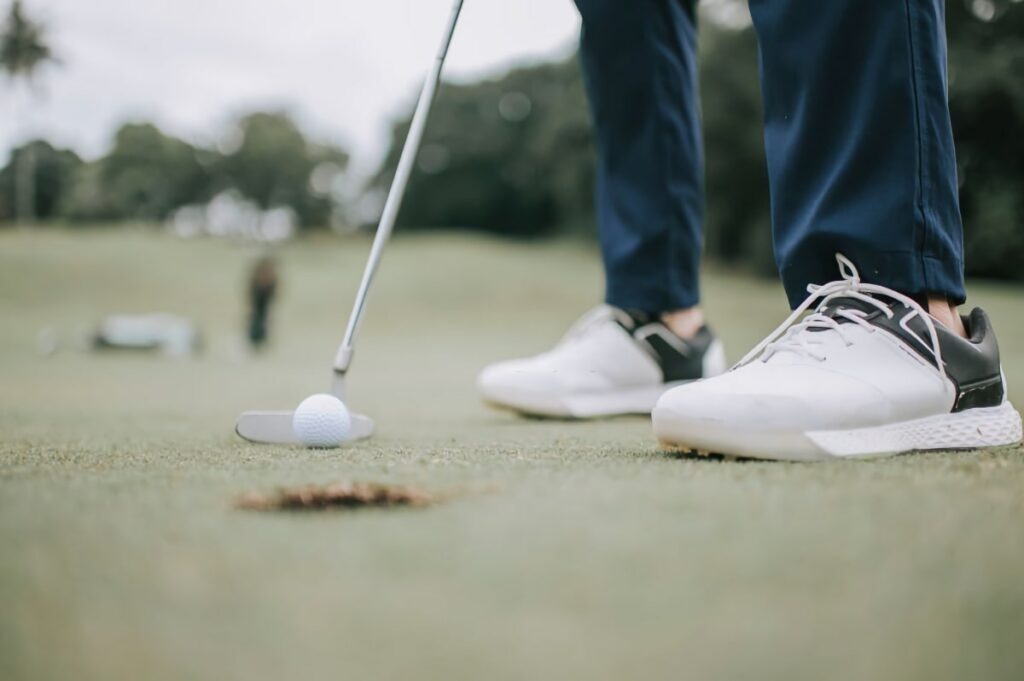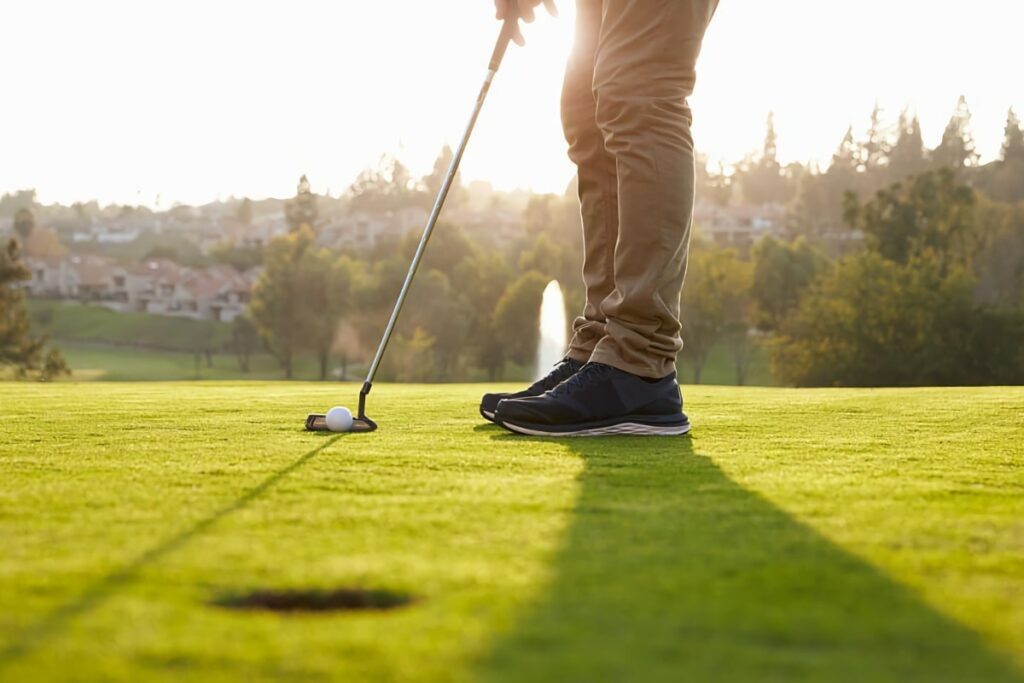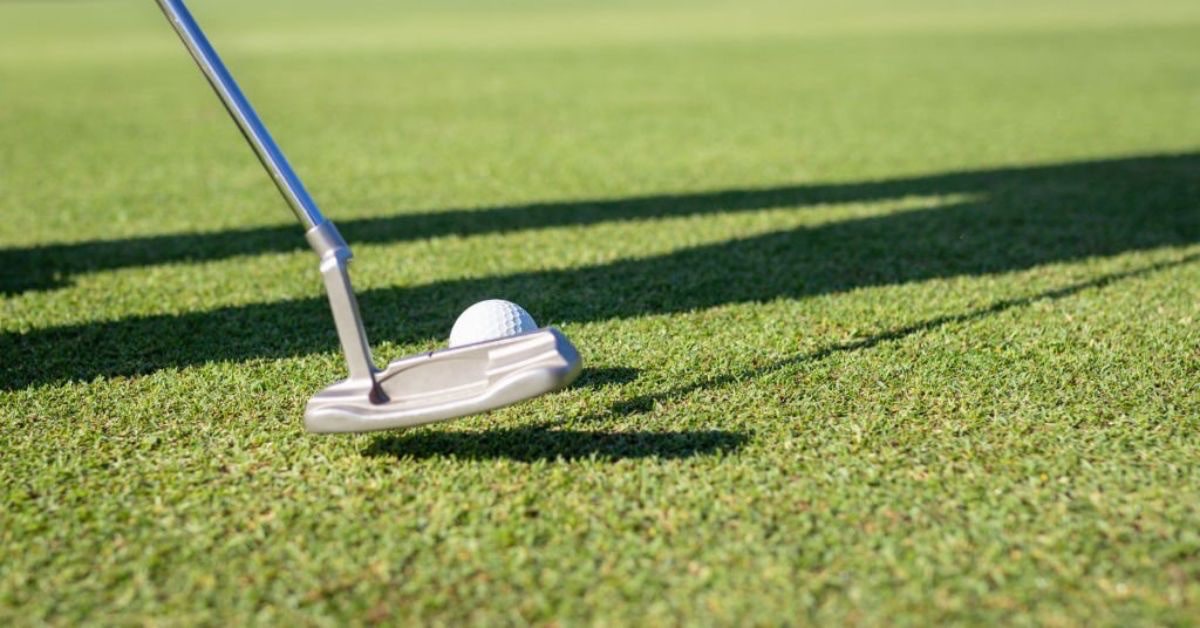When it comes to putting, a topic that’s not discussed often enough is the lie angle.
For instance — if you asked me what the lie angle was on my irons, I could confidently tell you I’ve always been adjusted to 2 degrees flat.
With the putter? I have no idea!
However, when you think about the precision that’s required for a consistent putting stroke, you quickly realize that lie angle is very important.
In this article, I’ll show you what I have discovered about the putter lie angle, why it matters so much, and what you should do to ensure that yours is correct.
Ready? Let’s get right into it.
Putter Lie Angle
Putter lie angle is the angle formed between the club head (when resting flat on the ground) and the shaft. Typically, the standard putter lie angle is about 70 degrees. Importantly, the lie angle influences your putting technique, stance, and posture, which ultimately impacts your performance on the greens.

What Is a Standard Putter Lie Angle?
The standard lie angle for a putter is about 70 degrees.
Some manufacturers run closer to 71º, but 70º is about the standard. I looked at some of the most popular putter models on the market to confirm, and here is what I found:
- Odyssey White Hot Versa Double Wide — 70 degrees
- Scotty Cameron Special Select Newport 2 — 70 degrees
- Ping PLD Milled DS72 — 20 degrees (true measurement of 70 degrees)
I didn’t have to spend too much time researching to see that 70º is the standard.
And don’t let Ping’s 20-degree lie angle throw you off!
Usually, we measure the angle from the ground up. Instead, Ping measures from the 90º angle back down to the shaft, so it’s essentially 70 degrees.

Why Is Putter Lie Angle Important?
In short, putter lie angle has a major impact on your putting stroke.
When you putt, you ideally want the putter to feel like an extension of your arms.
When the putter feels like an extension of the arms, it’s far easier to make a consistent putting stroke with a sense of rhythm — while achieving a proper putting grip.
Have you ever looked down at your putter to find the toe or heel raised off the ground?
Essentially, this is a sign that the lie angle of your putter is incorrect.
According to the club fitters at True Spec Golf, the best performance with the putter comes when both the toe and heel sit evenly at impact.
One important thing to consider is that the angle formed at the elbow — between the forearm and upper arm — should ideally match the lie angle.
That said, the angle of a golfer’s forearm to the wrist is not always exactly 70 degrees.
For instance, if you’re trying to take an arm angled at 73 degrees and match it to a putter with a 70-degree lie angle, there will likely be a bit of a disconnect.
That disconnect can create discomfort in the hand position, difficulty getting into the proper putter setup, and ultimately cause an inconsistent putting stroke.
So, how can we be sure that our lie angle is correct?
Scroll to find out!

How to Measure & Adjust Putter Lie Angle
Measuring putter lie angle is easiest when you have a loft and lie machine to use.
Most professional club fitters will have a loft and lie machine — they simply place the putter in the device, and it will tell you exactly what the lie angle is.
Finding a lie angle measurement on your own is a bit more difficult, so it’s worth reaching out to a club fitter for extra accuracy and peace of mind.
Even golfers who work with their own clubs to make fitting adjustments like altering the putter length only do so when they have the right tools in place.
At a putter fitting, the club fitter will get you set up with a comfortable posture. Then, they will observe how the putter is sitting on the ground behind the ball.
When determining lie angle adjustments, there are 2 key things to consider:
- If the heel is off the ground — you need to INCREASE the lie angle
- If the toe is off the ground — you need to DECREASE the lie angle
Often, the lie angle only needs to be adjusted by 1-3 degrees flat or upright. While these are minor adjustments, they can have a major impact on the roll of the ball.
Adjusting the Putter Lie Angle
To adjust the lie angle, the club fitter will place the putter in a loft and lie machine.
Next, the machine will enable the fitter to bend the putter at the hosel joint by a couple of degrees in either direction — whether it’s flat or upright.
Lie angle adjustments can be made on both blade and mallet putters.
Once the lie angle adjustments have been made, you should ideally feel the putter head resting completely flat on the ground when you take up your natural putting stance.
That way, you’ll be able to make consistent contact with the center of the putter face with every stroke — making your action more reliable and producing a better roll.
Check out the video below by The Golf Paradigm, which discusses how our anatomy should dictate the lie angle of our putters:
Final Thoughts
As we have determined, the lie angle of a stock putter is almost always 70 degrees.
However, the angle of our forearms is not always the same. To get these two to match for a more consistent putting technique, you’ll want to adjust your lie angle.
Personally, I’d recommend looking into lie angle adjustment if you struggle with:
- Inconsistency with direction in your putting
- Mishits where the center of the face is slightly missed
- Inability to grip the club in a way that feels comfortable or locked in
Lie angle adjustments are not expensive, and don’t even require a rebuild of the club.
Simply find a local pro shop that you trust, tell them your concerns with your putter lie angle, and you’ll be back on the course with an improved putter in no time!


